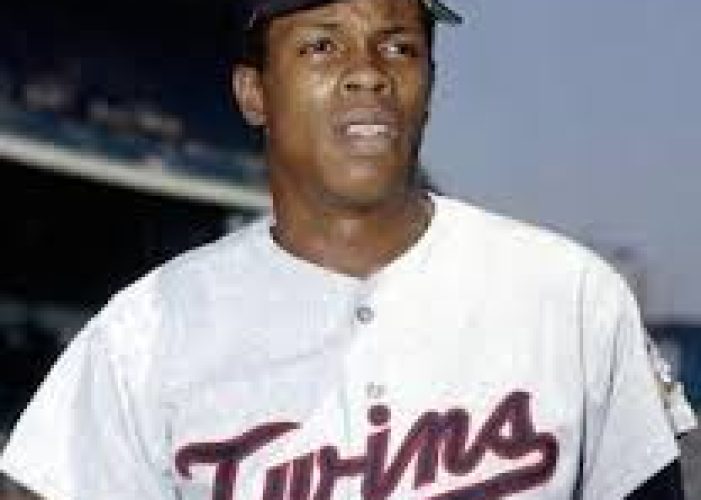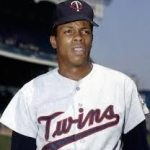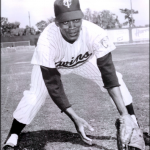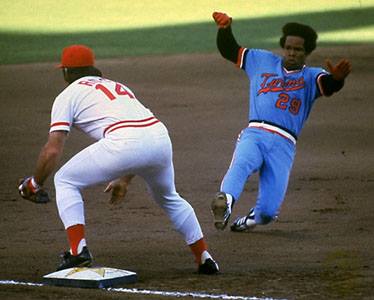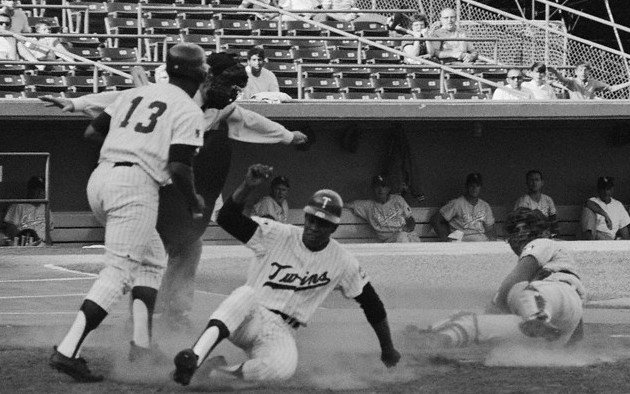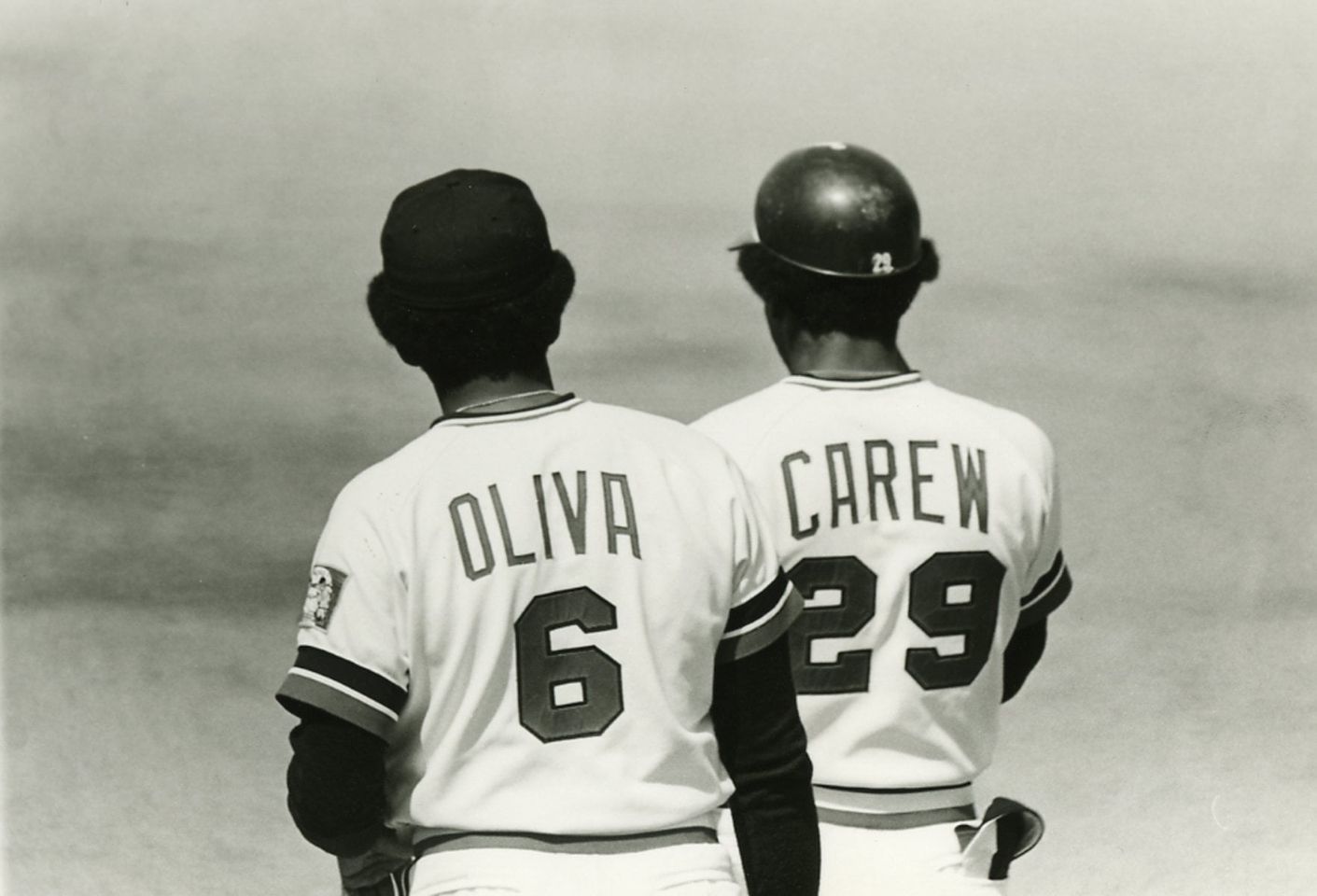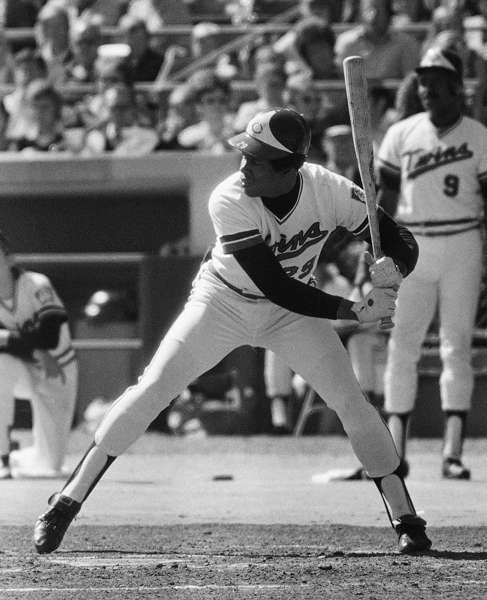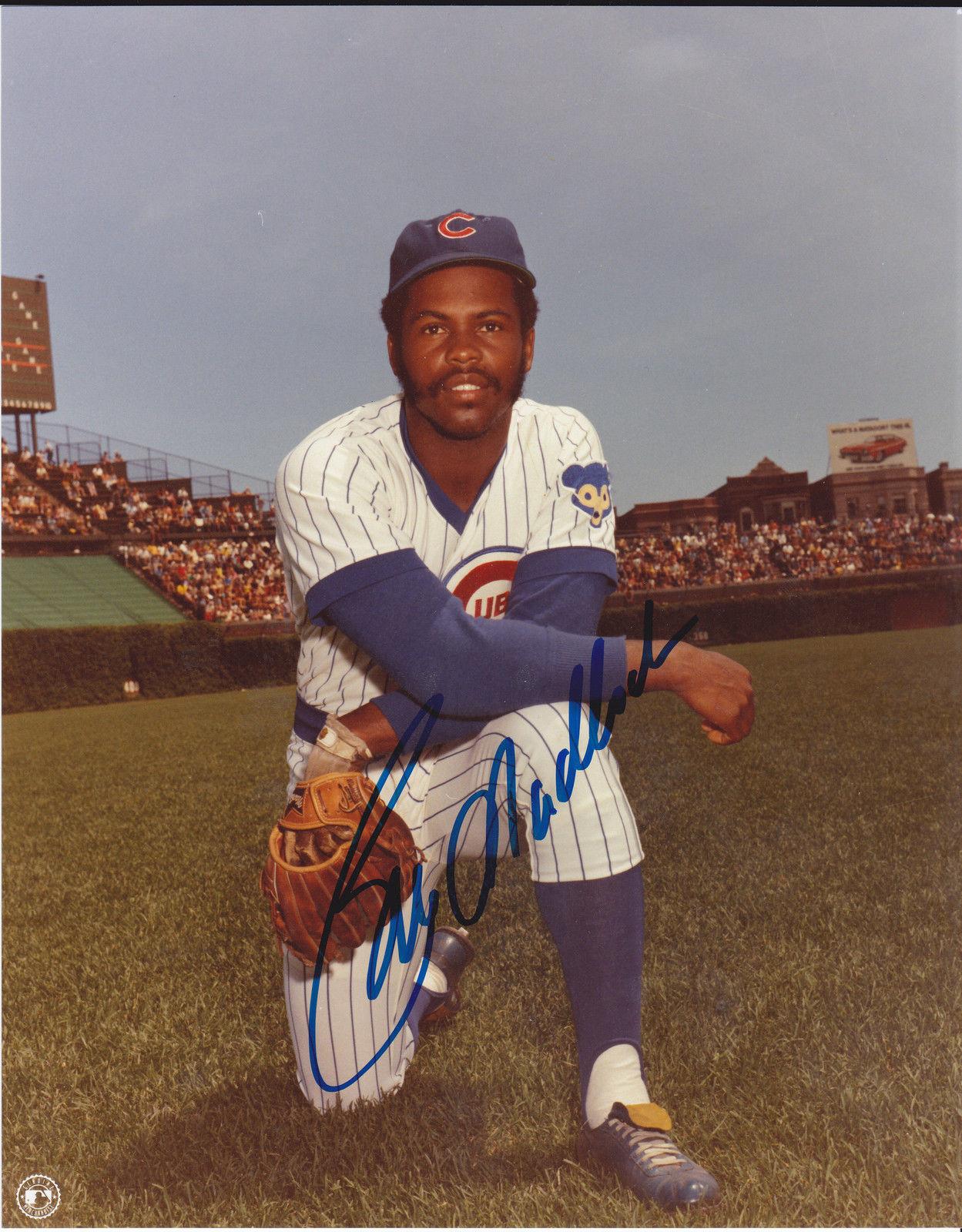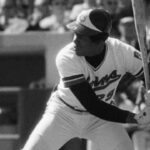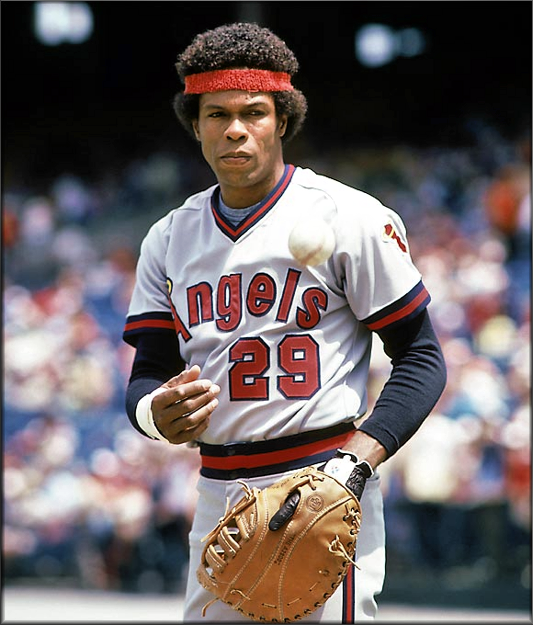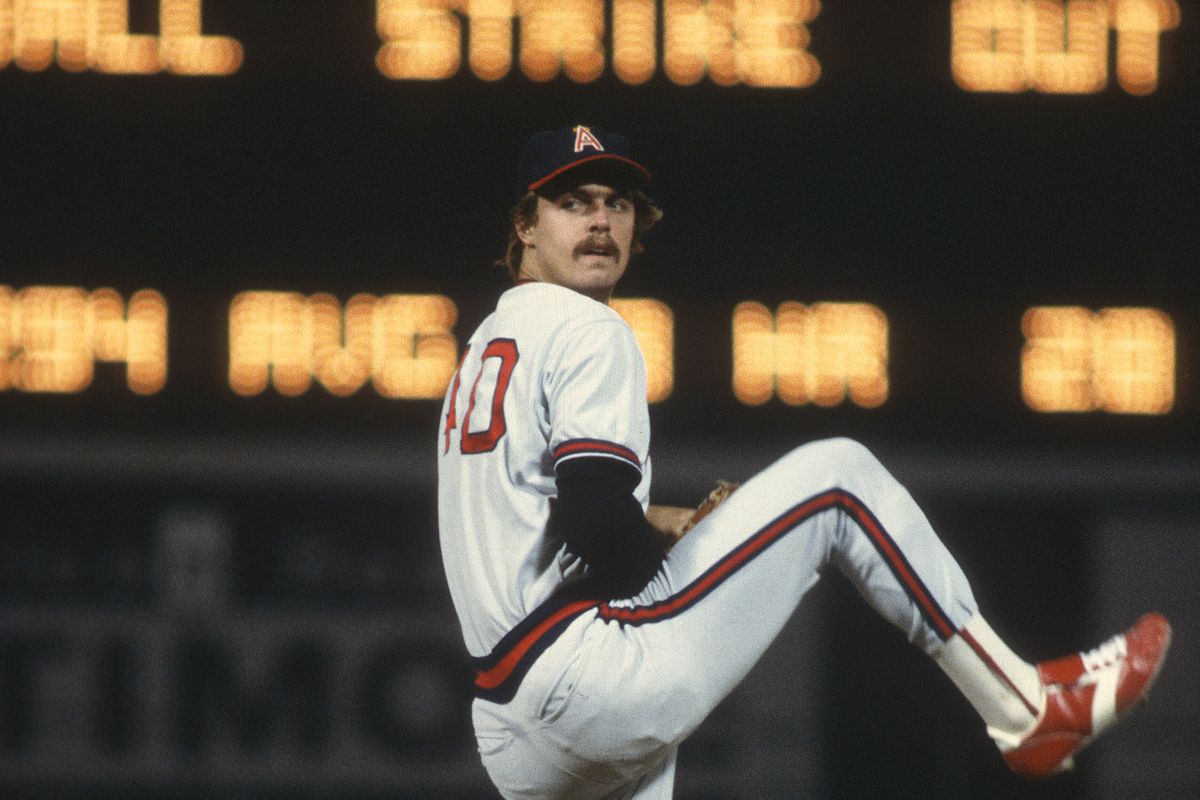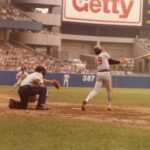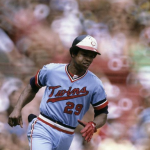Rod Carew
Positions: First Baseman and Second Baseman
Bats: Left • Throws: Right
6-0, 170lb (183cm, 77kg)
Born: October 1, 1945 in Gatun, Panama pa
High School: George Washington HS (New York, NY)
Debut: April 11, 1967 (10,161st in MLB history)
vs. BAL 4 AB, 2 H, 0 HR, 0 RBI, 0 SB
Last Game: October 5, 1985
vs. TEX 2 AB, 0 H, 0 HR, 0 RBI, 0 SB
Hall of Fame: Inducted as Player in 1991. (Voted by BBWAA on 401/443 ballots)
View Rod Carew’s Page at the Baseball Hall of Fame (plaque, photos, videos).
Full Name: Rodney Cline Carew
View Player Bio from the SABR BioProject
Nine Players Who Debuted in 1967
Reggie Jackson
Graig Nettles
Rod Carew
Johnny Bench
Tom Seaver
Jerry Koosman
Amos Otis
Sparky Lyle
Aurelio Rodriguez
The Rod Carew Teammate Team
C: Bob Boone
1B: Harmon Killebrew
2B: Bobby Grich
3B: Doug DeCinces
SS: Bert Campaneris
LF: Lyman Bostock
CF: Fred Lynn
RF: Tony Oliva
DH: Reggie Jackson
SP: Bert Blyleven
SP: Jim Perry
SP: Nolan Ryan
SP: Frank Tanana
SP: Don Sutton
RP: Bill Campbell
M: Gene Mauch
Notable Events and Chronology for Rod Carew Career
Biography
Rod Carew
Appearing to almost catch the ball with his bat, Panamanian-born Rod Carew carefully placed base hits all over the diamond, winning seven batting titles. He was the best bunter of his generation, and he stole home 17 times. Toiling for poor Twins teams and the hard-luck Angels, Carew collected more hits than any player who had never played in a World Series.
Best Season: 1977
Despite falling eight hits shy of .400, Carew had a phenomenal season. He won the AL batting title by a whopping 52 points over teammate Lyman Bostock. He reached the century mark in RBI for the first time, quite a feat for a singles hitter on a mediocre team. He scored 128 runs, leading the league. He also paced the AL in triples, with 16. Carew’s 239 hits were the most by an AL hitter since Heinie Manush collected 241 for the St. Louis Browns in 1928. In addition, Carew set Minnesota single-season records for runs, hits, batting average, and triples. He safely bunted for a hit seven times with two strikes against him. In contrast to George Brett, who would flirt with .400 all summer in 1980 before falling short, Carew made a late surge to vault his batting average to .388, the highest mark since Ted Williams hit .406 in 1941. For his stellar season, Carew was named AL MVP.
Factoids
Rodney Cline Carew was named after Dr. Rodney Cline, who delivered baby Carew while on a train in the Panama Canal Zone on October 1, 1945.
Full Bio
Born in the Panama Canal zone, Rodney Cline Carew learned to hit tennis balls and wads of paper taped into a ball. When he was 16 his mother took the family to New York City to live with Rod’s godmother. Carew grew up not far from the old Polo Grounds, and near Yankee Stadium.
He began his career as a second baseman, but he was never much of a fielder. He won the AL Rookie of the Year award in 1967 and was an All-Star for the first of 18 consecutive seasons. He garnered his first batting title in 1969, despite missing two-weeks and several weekends for military commitments. In 1970 he missed three months with torn cartilage after a runner collided with him at the keystone on June 22nd.
In 1972, Carew won the first of four straight batting titles, joining Ty Cobb as the only players to do so in the American League. By that time he was an accomplished bunter – beating out 27 of 35 bunt attempts for hits in ‘72. In both 1973 and 1974 he topped the loop in hits.
In 1976 his string of four straight batting titles was halted when he lost the crown on the final day of the season to George Brett. It was one of the most controversial batting races in history. That season he was moved from second base to play first, a position he held the rest of his career.
Carew had his career year in 1977 when he made a serious run at the .400 batting mark, last attained by Hall of Famer Ted Williams. Williams believed Carew had an excellent chance to reach .400, especially considering his speed.
Carew followed his 1977 masterpiece with his final batting title in 1978, hitting .333. But during the season he entered a war of words with Twins owner Calvin Griffith. The two debated his salary for 1979, and Carew hinted he would like to be traded to a contending team, and soon the Yankees, Giants, and Angels were making offers. He eventually was dealt to the California Angels in spring training 1979. That season he helped the team to the playoffs, his first taste of post-season since 1970.
In the following seasons he continued to top the .300 mark and fit nicely in the middle of the Angels star-studded lineup. In 1982 the Halos returned to the ALCS, losing in heartbreaking fashion. Carew managed just a .176 batting average. For his career, Carew batted .220 (11-for-50) with one RBI in 14 playoff games.
During the ’82 campaign, Carew suffered three hairline fractures in his right hand after punching Twins pitcher Darrell Jackson. Jackson had triggered a brawl when he knocked down several Angel batters, including the normally mild-mannered Carew. Despite the injury, Carew put together his longest hitting streak – 25 games.
In 1983, Carew got off to one of the fastest starts in baseball history, and on May 7 he was leading the league with an amazing .500 average. Of course he tapered off, but still hit .300 for the final time despite injuries. Two seasons later, in 1985, he collected his 3,000th hit off Twins left-hander Frank Viola on August 4th. That season, after batting a respectable (for anyone else) .280, he retired with 3,053 base hits after no team showed interest in his free agency. Both the Twins and the Angels retired his uniform #29. He was a first ballot Hall of Famer in 1991.
Chasing .400
For years baseball experts had been saying that Rod Carew, the line-drive hitting infielder of the Minnesota Twins, could bat .400 for a season. For years Carew had been winning the batting title – five times between 1969 and 1975. Finally in 1977, Carew began to believe he could hit .400 as well.
The left-hander with the picture-perfect stroke won each batting title from 1972 to 1975. He also won the crown in 1969, at the age of twenty-three, batting .332. It was the first time he had ever reached the .300 level. In 1977, after losing a tight batting race in 1976, Carew was ready to challenge the .400 mark.
Carew began the season red-hot, and continued his pace into June. On June 26th he collected four hits against the White Sox, raising his batting average to .403. His highest mark was .411, on July 1st. After slumping a bit in August and early September, he caught fire and raced to the finish line to bat .388 – the highest mark since Ted Williams hit the same in 1957.
In September Carew was slowed when he contracted lymphangitis – an infection in his right forearm. Though it sidelined him very shortly, the distraction and medication didn’t help his batting.
Despite falling eight hits shy of .400, Carew had a phenomenal season. He won the AL batting title by a whopping 52 points over teammate Lyman Bostock. He reached the century mark in RBI for the first time, quite a feat for a singles hitter on a mediocre team. He scored 128 runs – leading the league. He also paced the AL in triples, with 16.
Carew’s 239 hits were the most by an AL hitter since Heinie Manush collected 241 for the St. Louis Browns in 1928. In addition, Carew set Minnesota single-season records for runs, hits, batting average, and triples. He safely bunted for a hit seven times with two strikes against him.
Against right-handers, Carew hit .398 (154-for-387). Against southpaws he batted .371 (85-for-229). He hit well during the day (.403), at night (.379), at home (.401), and on the road (.374). With men on base he hit an amazing .422 (116-for-275), with a .596 slugging mark and a .489 OBP. He was at the top of his game. Carew was known for his soft, sweet stroke, but it was ironic that he employed as many as twelve different batting stances throughout his career. He was also rare in that he used thin-handled bats.
Carew’s best month was June when he hit an incredible .486 (54-for-111) with seven doubles, eight triples, three homers, and 30 RBI in 28 games. July was unkind to him: he hit .304 in 29 games with just nine extra-base hits. He got hot after September 1, hitting .439 as the season closed. His favorite victims were the White Sox, of whom he hit a blistering .492, with 29 hits in 14 games. He also hit .450 against the Yankees, .446 against Texas pitching, and .432 off the Blue Jays.
During his magical 1977 season, Carew battered many AL pitchers: going 9-for-12 off Ed Figueroa, 5-for-6 against Gaylord Perry, 6-for-10 against Doc Medich, and 6-for-12 off Paul Splittorff. The pitchers who shut him down and cost him his .400 chance were the same pitchers the rest of the league struggled with: he was 1-for-10 off Ron Guidry, 2-for-12 against Detroit rookie right-hander Dave Rozema, and 3-for-14 facing Nolan Ryan, who struck him out four times.
He was named the AL Most Valuable Player, beating out Al Cowens and Ken Singleton. The Sporting News named him Player of the Year, an honor voted by his peers. Perhaps the most amazing fact about the 1977 season came after the playing was over. Faced with the overwhelming evidence that his six-time batting champ was the best hitter in baseball, notorious cheapskate Twins’ owner Calvin Griffith voluntarily gave Carew a $100,000 bonus!
The Hot Start in 1983
Rod Carew challenged the .400 mark seriously in 1977, finishing at .388 and winning his sixth batting title. In 1974 he batted .400 as late as June, ultimately settling at .364 with 218 hits. For years baseball men had been predicting Carew’s .400 season – citing his sweet stroke, adaptability, ability to bunt, and speed afoot. But in 1983, in his 17th season at the age of thirty-seven, Carew seemed unlikely to flirt with the magical number again.
The 1983 season held great promise for the California Angels – winners of the AL West the previous year. They had blown a 2-0 lead in the playoffs (the first team to do so), but their team seemed loaded for another post-season run. Carew, Fred Lynn, Reggie Jackson, Bobby Grich, Brian Downing, Doug DeCinces, Bob Boone, and Tommy John formed an All-Star cast, albeit a veteran one.
As the season began Carew was facing his doubters. Some experts predicted that Carew’s magical bat would age, pointing to his decreasing extra-base numbers in recent years. But the ageless batting champ had some tricks up his sleeve. The man who Alan Bannister called “the only player who can go 4-for-3,” started the season as hot as any batter in baseball history.
Through May 7, over his first 23 games, Carew had 48 hits in 96 at-bats for a blistering .500 average. A week later he was hitting .442 (50-for-113) and the Angels were in first place. The start was the hottest since Stan Musial’s torrid pace to start the 1958 campaign. Only Musial in ’58 and Jimmie Foxx in 1932 had reached 50 hits in fewer at-bats (107 for a .467 mark).
Carew’s pace overshadowed the red-hot start of George Brett, who was also batting well over .400 into May. Unfortunately for the Angels and Carew, the rest of the season was not as kind. The Angels finished 29 games behind the White Sox, and Carew batted .306 the rest of the season after his amazing getaway.
Where He Played
Carew began his career as a second baseman, winning the Rookie of the Year Award in 1967. But he was never considered an excellent defensive second baseman, and by the time he was 29, the Twins were pushing him to switch positions. In 1976 the Twins did a sensible thing: they moved Carew to first base. But they also did an odd thing: they replaced him at second with Bobby Randall, a career minor leaguer, who was a 28-year-old rookie. Despite Randall’s ineffectiveness, Carew was at first to stay, and when he was traded to the Angels prior to the 1979 campaign, he was made California’s first sacker. Very late in Carew’s career, he played some at DH. In total, he played just slightly more games at first than at second (1,184 to 1,130). But, like Ernie Banks, another middle infielder who switched to first in the midst of his Hall of Fame career, Carew is considered by most historians as a middle infielder.
@ET-DC@eyJkeW5hbWljIjp0cnVlLCJjb250ZW50IjoicG9zdF90YWdzIiwic2V0dGluZ3MiOnsiYmVmb3JlIjoiTGVhcm4gTW9yZSBhYm91dCB0aGUgdGVhbXMsIHBsYXllcnMsIGJhbGwgcGFya3MgYW5kIGV2ZW50cyB0aGF0IGhhcHBlbmVkIG9uIHRoaXMgZGF0ZSBpbiBoaXN0b3J5IC0gLSAtIC0gLSAtIC0gIiwiYWZ0ZXIiOiIiLCJsaW5rX3RvX3Rlcm1fcGFnZSI6Im9uIiwic2VwYXJhdG9yIjoiIHwgIiwiY2F0ZWdvcnlfdHlwZSI6InBvc3RfdGFnIn19@
Factoids, Quotes, Milestones and Odd Facts
Played For
Minnesota Twins (1967-1978)
California Angels (1979-1985)
Similar: Cecil Cooper, Wade Boggs, Tony Gwynn
Linked: George Brett, Tom Seaver
Best Season, 1977
Despite falling eight hits shy of .400, Carew had a phenomenal season. He won the AL batting title by a whopping 52 points over teammate Lyman Bostock. He reached the century mark in RBI for the first time, quite a feat for a singles hitter on a mediocre team. He scored 128 runs, leading the league. He also paced the AL in triples, with 16. Carew’s 239 hits were the most by an AL hitter since Heinie Manush collected 241 for the St. Louis Browns in 1928. In addition, Carew set Minnesota single-season records for runs, hits, batting average, and triples. He safely bunted for a hit seven times with two strikes against him. In contrast to George Brett, who would flirt with .400 all summer in 1980 before falling short, Carew made a late surge to vault his batting average to .388, the highest mark since Ted Williams hit .406 in 1941. For his stellar season, Carew was named AL MVP.
Awards and Honors
1967 AL Rookie of the Year
1977 AL MVP
Post-Season Appearances
1969 American League Championship Series
1970 American League Championship Series
1979 American League Championship Series
1982 American League Championship Series
Factoid
Rodney Cline Carew was named after Dr. Rodney Cline, who delivered baby Carew while on a train in the Panama Canal Zone, on October 1, 1945.
Full Bio
Born in the Panama Canal zone, Rodney Cline Carew learned to hit tennis balls and wads of paper taped into a ball. When he was 16 his mother took the family to New York City to live with Rod’s godmother. Carew grew up not far from the old Polo Grounds, and near Yankee Stadium.
He began his career as a second baseman, but he was never much of a fielder. He won the AL Rookie of the Year award in 1967 and was an All-Star for the first of 18 consecutive seasons. He garnered his first batting title in 1969, despite missing two-weeks and several weekends for military commitments. In 1970 he missed three months with torn cartilage after a runner collided with him at the keystone on June 22nd.
In 1972, Carew won the first of four straight batting titles, joining Ty Cobb as the only players to do so in the American League. By that time he was an accomplished bunter – beating out 27 of 35 bunt attempts for hits in ‘72. In both 1973 and 1974 he topped the loop in hits.
In 1976 his string of four straight batting titles was halted when he lost the crown on the final day of the season to George Brett. It was one of the most controversial batting races in history. That season he was moved from second base to play first, a position he held the rest of his career.
Carew had his career year in 1977 when he made a serious run at the .400 batting mark, last attained by Hall of Famer Ted Williams. Williams believed Carew had an excellent chance to reach .400, especially considering his speed.
Carew followed his 1977 masterpiece with his final batting title in 1978, hitting .333. But during the season he entered a war of words with Twins owner Calvin Griffith. The two debated his salary for 1979, and Carew hinted he would like to be traded to a contending team, and soon the Yankees, Giants, and Angels were making offers. He eventually was dealt to the California Angels in spring training 1979. That season he helped the team to the playoffs, his first taste of post-season since 1970.
In the following seasons he continued to top the .300 mark and fit nicely in the middle of the Angels star-studded lineup. In 1982 the Halos returned to the ALCS, losing in heartbreaking fashion. Carew managed just a .176 batting average. For his career, Carew batted .220 (11-for-50) with one RBI in 14 playoff games.
During the ’82 campaign, Carew suffered three hairline fractures in his right hand after punching Twins pitcher Darrell Jackson. Jackson had triggered a brawl when he knocked down several Angel batters, including the normally mild-mannered Carew. Despite the injury, Carew put together his longest hitting streak – 25 games.
In 1983, Carew got off to one of the fastest starts in baseball history, and on May 7 he was leading the league with an amazing .500 average. Of course he tapered off, but still hit .300 for the final time despite injuries. Two seasons later, in 1985, he collected his 3,000th hit off Twins left-hander Frank Viola on August 4th. That season, after batting a respectable (for anyone else) .280, he retired with 3,053 base hits after no team showed interest in his free agency. Both the Twins and the Angels retired his uniform #29. He was a first ballot Hall of Famer in 1991.
Where He Played: Carew began his career as a second baseman, winning the Rookie of the Year Award in 1967. But he was never considered a great defensive second baseman, and by the time he was 29, the Twins were pushing him to switvh positions. In 1976 the Twins did a sensible thing: they moved Carew to first base. But they also did an odd thing: they replaced him at second with Bobby Randall, a career minor leaguer, who was a 28-year old rookie. Despite Randall’s ineffectiveness, Carew was at first to stay, and when he was traded to the Angels prior to the 1979 campaign, he was made California’s first sacker. Very late in Carew’s career, he played some at DH. In total, he played just slightly more games at first than at second (1,184 to 1,130). But, like Ernie Banks, another middle infielder who switched to first in the midst of his Hall of Fame career, Carew is considered by most historians as a middle infielder.
Milestones
Carew collected his 3,000th career hit (a single off Frank Viola) on August 4, 1984 — the same day that Tom Seaver won his 300th career game.
Hitting Streaks
25 games (1982)
25 games (1982)
18 games (1980)
18 games (1980)
15 games (1967)
15 games (1967)
Transactions
June 24, 1964: Signed by the Minnesota Twins as an amateur free agent; February 3, 1979: Traded by the Minnesota Twins to the California Angels for Ken Landreaux, Dave Engle, Paul Hartzell, and Brad Havens; November 7, 1983: Granted Free Agency; November 22, 1983: Signed as a Free Agent with the California Angels; November 12, 1985: Granted Free Agency.
Chasing .400
For years baseball experts had been saying that Rod Carew, the line-drive hitting infielder of the Minnesota Twins, could bat .400 for a season. For years Carew had been winning the batting title – five times between 1969 and 1975. Finally in 1977, Carew began to believe he could hit .400 as well.
The left-hander with the picture-perfect stroke won each batting title from 1972 to 1975. He also won the crown in 1969, at the age of twenty-three, batting .332. It was the first time he had ever reached the .300 level. In 1977, after losing a tight batting race in 1976, Carew was ready to challenge the .400 mark.
Carew began the season red-hot, and continued his pace into June. On June 26th he collected four hits against the White Sox, raising his batting average to .403. His highest mark was .411, on July 1st. After slumping a bit in August and early September, he caught fire and raced to the finish line to bat .388 – the highest mark since Ted Williams hit the same in 1957.
In September Carew was slowed when he contracted lymphangitis – an infection in his right forearm. Though it sidelined him very shortly, the distraction and medication didn’t help his batting.
Despite falling eight hits shy of .400, Carew had a phenomenal season. He won the AL batting title by a whopping 52 points over teammate Lyman Bostock. He reached the century mark in RBI for the first time, quite a feat for a singles hitter on a mediocre team. He scored 128 runs – leading the league. He also paced the AL in triples, with 16.
Carew’s 239 hits were the most by an AL hitter since Heinie Manush collected 241 for the St. Louis Browns in 1928. In addition, Carew set Minnesota single-season records for runs, hits, batting average, and triples. He safely bunted for a hit seven times with two strikes against him.
Against right-handers, Carew hit .398 (154-for-387). Against southpaws he batted .371 (85-for-229). He hit well during the day (.403), at night (.379), at home (.401), and on the road (.374). With men on base he hit an amazing .422 (116-for-275), with a .596 slugging mark and a .489 OBP. He was at the top of his game. Carew was known for his soft, sweet stroke, but it was ironic that he employed as many as twelve different batting stances throughout his career. He was also rare in that he used thin handled bats.
Carew’s best month was June, when he hit an incredible .486 (54-for-111) with seven doubles, eight triples, three homers, and 30 RBI in 28 games. July was unkind to him: he hit .304 in 29 games with just nine extra-base hits. He got hot after September 1, hitting .439 as the season closed. His favorite victims were the White Sox, of whom he hit a blistering .492, with 29 hits in 14 games. He also hit .450 against the Yankees, .446 against Texas pitching, and .432 off the Blue Jays.
During his magical 1977 season, Carew battered many AL pitchers: going 9-for-12 off Ed Figueroa, 5-for-6 against Gaylord Perry, 6-for-10 against Doc Medich, and 6-for-12 off Paul Splittorff. The pitchers who shut him down and cost him his .400 chance where the same pitchers the rest of the league struggled with: he was 1-for-10 off Ron Guidry, 2-for-12 against Detroit rookie right-hander Dave Rozema, and 3-for-14 facing Nolan Ryan, who struck him out four times.
He was named the AL Most Valuable Player, beating out Al Cowens and Ken Singleton. The Sporting News named him Player of the Year, an honor voted by his peers. Perhaps the most amazing fact about the 1977 season came after the playing was over. Faced with the overwhelming evidence that his six-time batting champ was the best hitter in baseball, notorious cheapskate Twins’ owner Calvin Griffith voluntarily gave Carew a $100,000 bonus!
The Hot Start in 1983
Rod Carew challenged the .400 mark seriously in 1977, finishing at .388 and winning his sixth batting title. In 1974 he batted .400 as late as June, ultimately settling at .364 with 218 hits. For years baseball men had been predicting Carew’s .400 season – citing his sweet stroke, adaptability, abaility to bunt, and speed afoot. But in 1983, in his 17th season at the age of thirty-seven, Carew seemed unlikely to flirt with the magical number again.
The 1983 season held great promise for the California Angels – winners of the AL West the previous year. They had blown a 2-0 lead in the playoffs (the first team to do so), but their team seemed loaded for another post-season run. Carew, Fred Lynn, Reggie Jackson, Bobby Grich, Brian Downing, Doug DeCinces, Bob Boone, and Tommy John formed an All-Star cast, albeit a veteran one.
As the season began Carew was facing his doubters. Some experts predicted that Carew’s magical bat would age, pointing to his decreasing extra-base numbers in recent years. But the ageless batting champ had some tricks up his sleeve. The man who Alan Bannister called “the only player who can go 4-for-3,” started the season as hot as any batter in baseball history.
Through May 7, over his first 23 games, Carew had 48 hits in 96 at-bats for a blistering .500 average. A week later he was hitting .442 (50-for-113) and the Angels were in first place. The start was the hottest since Stan Musial’s torrid pace to start the 1958 campaign. Only Musial in ’58 and Jimmie Foxx in 1932 had reached 50 hits in fewer at-bats (107 for a .467 mark).
Carew’s pace overshadowed the red-hot start of George Brett, who was also batting well over .400 into May. Unfortunately for the Angels and Carew, the rest of the season was not as kind. The Angels finished 29 games behind the White Sox and Carew batted .306 the rest of the season after his amazing getaway.
All-Star Selections
1967 AL
1968 AL
1969 AL
1970 AL
1971 AL
1972 AL
1973 AL
1974 AL
1975 AL
1976 AL
1977 AL
1978 AL
1979 AL
1980 AL
1981 AL
1982 AL
1983 AL
1984 AL
Replaced
Bernie Allen, a good-glove, no-hit guy, who was traded by Minnesota to the Senators in 1967.
Replaced By
Wally Joyner
Best Strength as a Player
Bat control’ Carew was easily the best bunter of the last 40 years.
Largest Weakness as a Player
Power
Other Resources & Links

